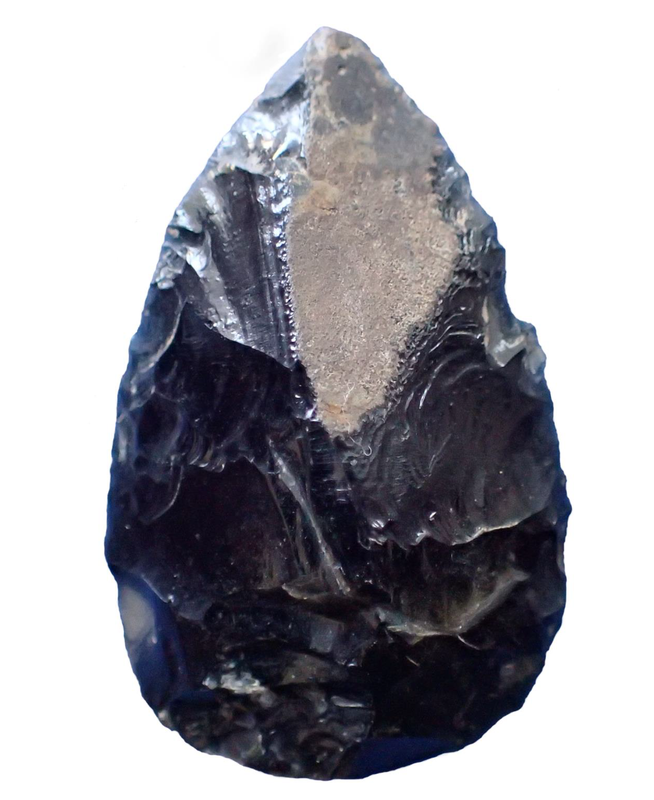Main Content
P1 – Archeology and Archeozoology
PI: Ralf Vogelsang | Agazi Negash, Alemseged Beldados
Post-Doc: Götz Ossendorf
PhD-Student: Minassie Girma
Watch this video to get a brief insight into subproject P1
Listen to the Interview "Stone Age hunters settled in Ethiopia's high mountains" with Götz Ossendorf on Deutschlandfunk
Overview
The question since when humans conquered high mountains and the age and evolution of the making of a tropical alpine human environment is the focus of archeological landscape surveys and rock shelter excavations. In addition to the lithic artifact analysis, archeozoological (Joséphine Lesur), archeobotanical (Ethiopian counterpart Alemseged Beldados), and Obsidian provenance studies (Ethiopian counterpart Agazi Negash) contribute to identify the nature of past human settlements in high elevations. In collaboration with Anthrosol investigation (P2), and Paleoecology (P4), we examine the spatial and diachronic interplay between humans and their environment during the late Quaternary landscape evolution.
Achievements
- Evidence of the world’s oldest human high elevation residential site, characterized by the use of Afroalpine resources including giant-mole rats as key food source of prehistoric Middle Stone Age foragers
- Human presence during several distinct prehistoric phases and
under changing environmental and climatic conditions - Variety of different adaptive strategies during LSA settlement (site
functions, subsistence, long-distance networks)
Objectives
- Achievement of a deeper understanding of the human-environment interaction during the Late Pleistocene MSA settlement phases identified thus far, with special emphasis...
⦁ on diverging human adaptation strategies.on the nature,
⦁ intensity and timing of prehistoric occupation events and on the environmental/climatic context of these. - Increase of the spatial and temporal resolution of human occupation during the long LSA phases against the background of varying climatic and environmental conditions by the build-up of a robust spatio-temporal dataset covering all key areas of the Bale Mountains This will contribute to identify...
⦁ major settlement pulses,
⦁ the degree of permanence and continuity of human occupation,
⦁ the nature of the connections to the lowland
⦁ flexible human strategies in terms of technology, subsistence, scope of activities, mobility and land use. - Identification and investigation of undisturbed deposits of past pastoral settlements and activities at selected rock shelters which are still today preferred residential sites (cf. Reber et al 2018).


Figure 1 & 2: Unifacial point (Middle Stone Age); excavation and sampling at Fincha Habera rock shelter during the 2017 field trip
Publications
Hensel, E. A., Vogelsang, R., Noack, T., Bubenzer, O. (2021). Stratigraphy and Chronology of Sodicho Rockshelter – A New Sedimentological Record of Past Environmental Changes and Human Settlement Phases in Southwestern Ethiopia. Frontiers in Earth Science 8, 640.
https://www.frontiersin.org/article/10.3389/feart.2020.611700
Ossendorf G., Tekelemariam, M. G., Lesur, J., Vogelsang, R. (accepted). Fincha Habera, Ethiopia. In Beyin, A., Wright, D., Wilkins, J., Boutouggar, A, Olszewski, D (Eds.), Handbook of Pleistocene Archaeology of Africa: Hominin behavior, geography and chronology. Cham: Springer International Publishing.
Kaboth-Bahr, S., Gosling, W.D., Vogelsang, R., Bahr, A., Scerri, E.M.L., Asrat, A., Cohen, A.S., Walter Düsing, W., Foerster, V., Lamb, H.F., Maslin, M.A., Roberts, H.M., Schäbitz, F. & M.H. Trauth (2021) Paleo-ENSO influence on African environments and early modern humans. PNAS 118/23, e2018277118.
https://doi.org/10.1073/pnas.2018277118
Negash, A.; Nash, B.P. & Brown, F.H. (2020): An initial survey of the composition of Ethiopian obsidian. Journal of African Earth Sciences 172(103977), 1-11.
DOI: 10.1016/j.jafrearsci.2020.103977
Ossendorf G, Groos AR, Bromm T, Tekelemariam MG, Glaser B, Lesur J, Schmidt J, Akçar N, Bekele T, Beldados A, Demissew S, Kahsay TH, Nash BP, Nauss T, Negash A, Nemomissa S, Veit H, Vogelsang R, Woldu Z, Zech W, Opgenoorth L & Miehe G (2019) Middle Stone Age foragers resided in high elevations of the glaciated Bale Mountains, Ethiopia, Science 365 (2019), 583-587.
DOI: 10.1126/science.aaw8942
Ossendorf, G.; Girma, M.T.; Lesur, J.; Groos, A.R.; Bromm, T.; Glaser, B.; Negash, A.; Beldados, A. & Vogelsang, R. (2019): Late Pleistocene hunter-gatherer occupation of high-altitude afro-alpine ecosystems in the Bale Mountains, South Ethiopia. Presented at INQUA, Dublin, Ireland
Girma, M.T.; Ossendorf, G. & Vogelsang, R.: Late Pleistocene and Holocene Human Settlement and Adaptation in Tropical High-altitude Environments: A Contribution from the Bale Mountains, Southeast Ethiopian Highlands. Presented at SAfA conference, Toronto, Canada.
Reber D , Gelaw MF, Detsch F, Vogelsang R, Bekele T, Nauss T & Miehe G (2018) High-Altitude Rock Shelters and Settlements in an African Alpine Ecosystem: The Bale Mountains National Park, Ethiopia. Human Ecology 46(4), 587–600.
DOI: 10.1007/s10745-018-9999-5
Kahsay, T. H. (2018):
Sedimentological and geochemical analysis of sediments in the excavated rock shelter at Fincha Habera section, Bale Mountains, Southeastern Ethiopia: implications on provenance (source) and depositional history
Lesur, J.(2017): Report on the preliminary study of faunal remains from Fincha Habira, Issue -, Addis Ababa.
Ossendorf, G.; Girma, M.T. & Vogelsang, R.(2016): The Mountain Exile Hypothesis: how humans benefited from and re-shaped African high altitude ecosystems during Quaternary climate changes. Presented at EAAPP, Addis Ababa, Ethiopia.
PhD Thesis
Tekelemariam; M. G. (2021): Late Pleistocene and Holocene Human Settlement and Adaptation in Tropical High-Altitude Environments: A Contribution from the Bale Mountains, Southeastern Ethiopian Highlands
Master thesis
Tarekegn, T. (submittd July 2021) Human-Environment Interactions in the Bale Mountains during the Late Pleistocene and early Holocene Epochs: Anthracological Study
Tariku, Z.K. (submitted in September 2021) Analysis of Faunal Collections from Simbero Rock Shelter in the Bale Mountains National Park
Kahsay, T. H. (2019): Sedimentological and geochemical analysis of sediments in the excavated rock shelter at Fincha Habera section, Bale Mountains, Southeastern Ethiopia: implications on provenance (s







